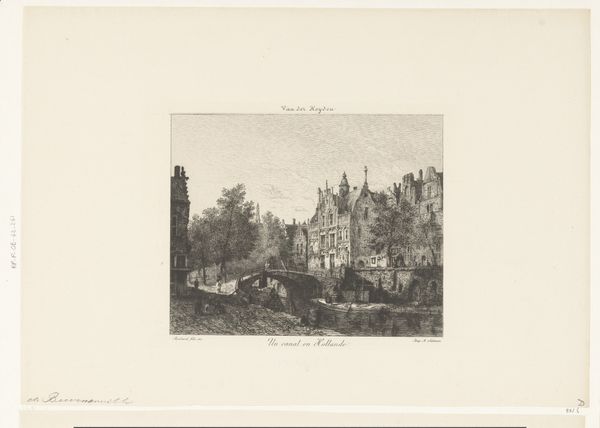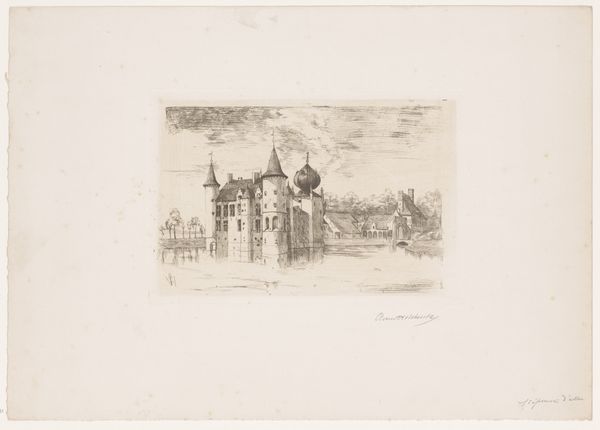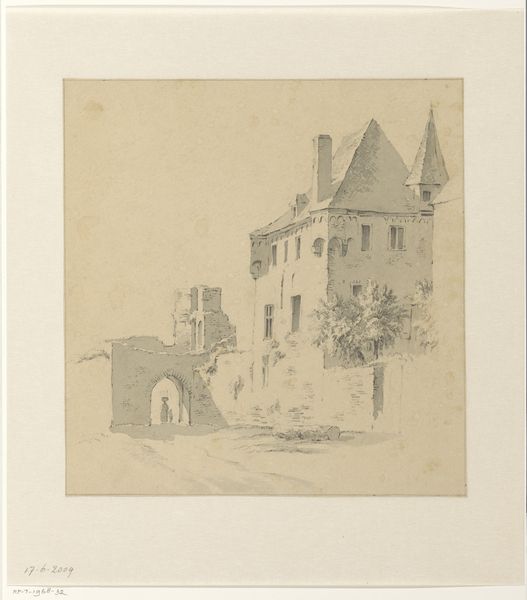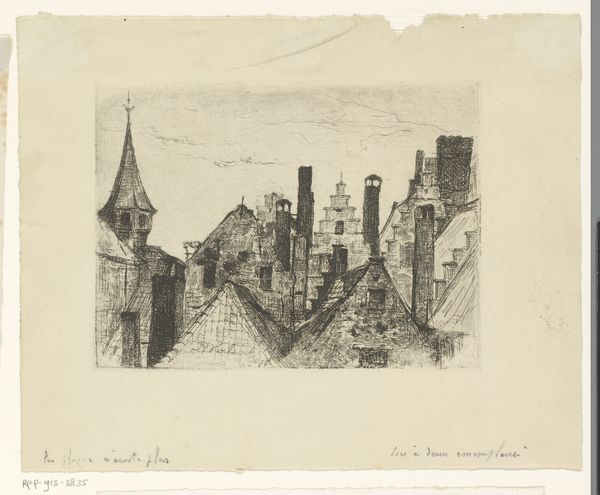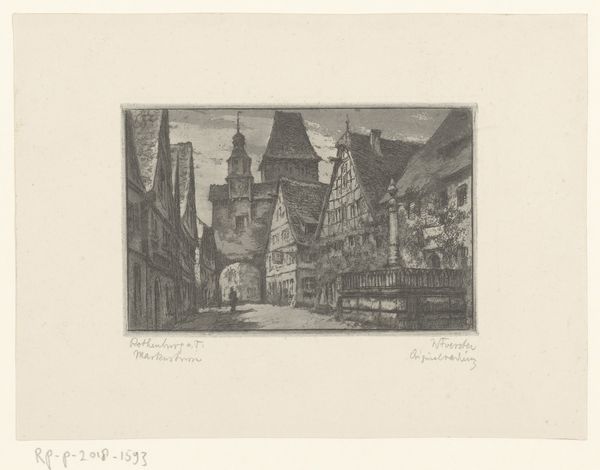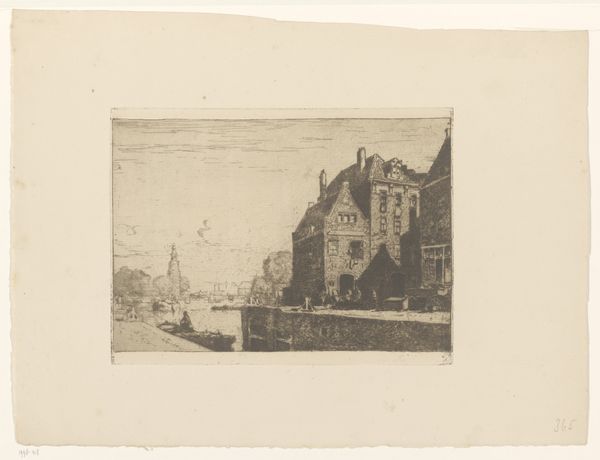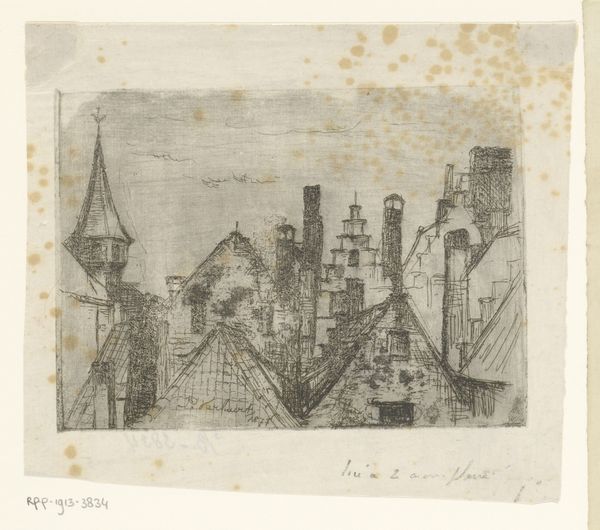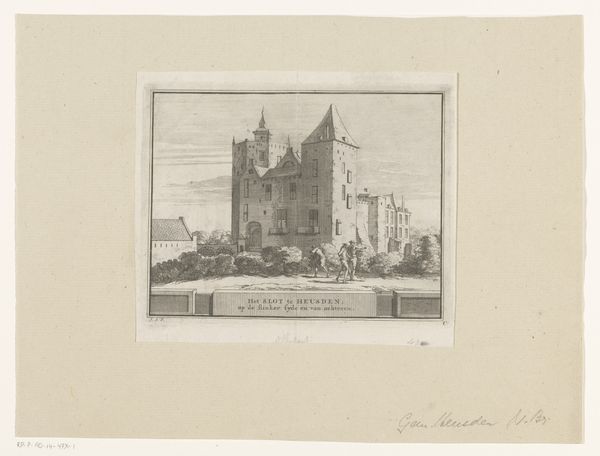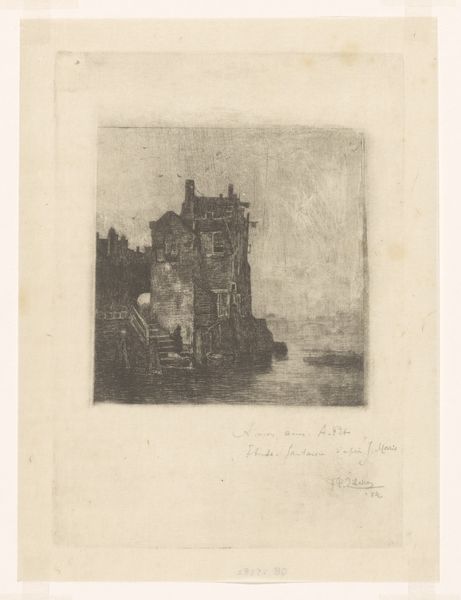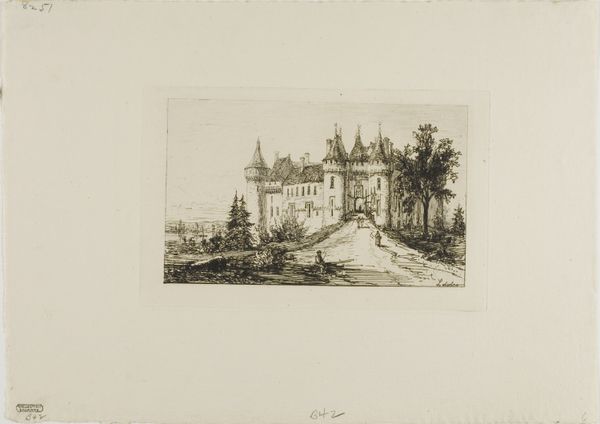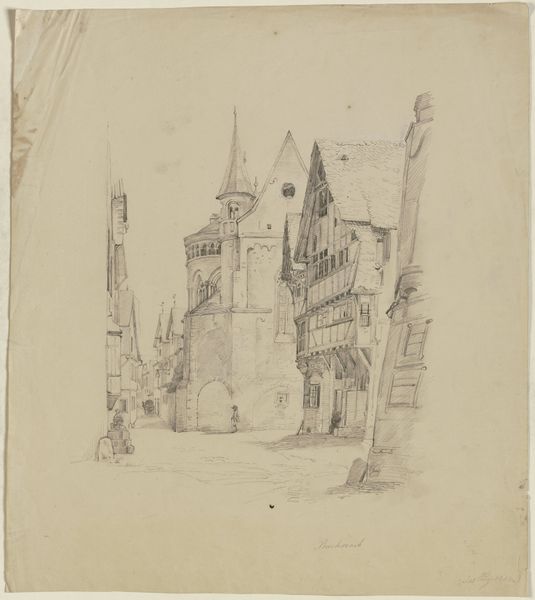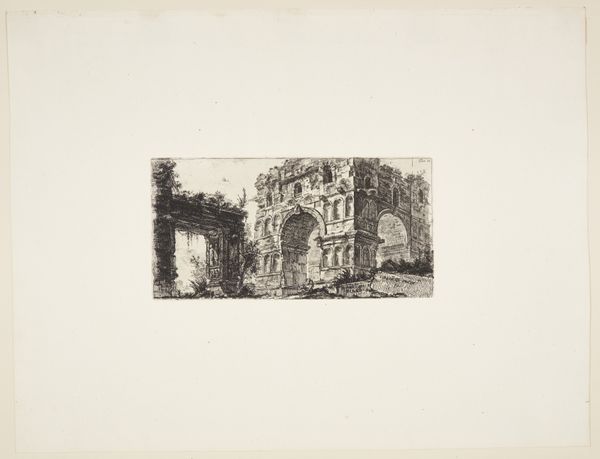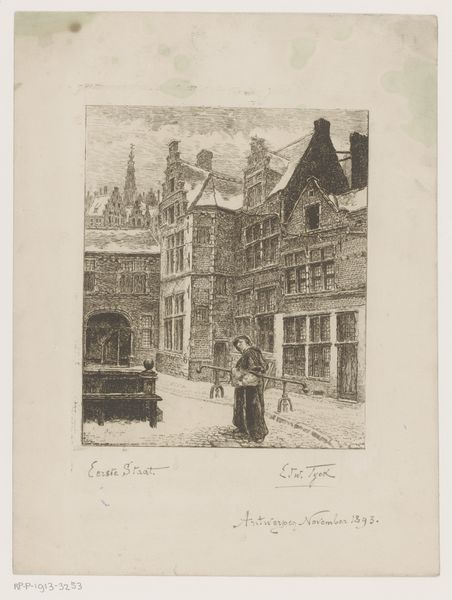
drawing, print, etching
#
drawing
# print
#
etching
#
cityscape
#
realism
Dimensions: Plate: 5 1/8 × 3 15/16 in. (13 × 10 cm) Sheet: 11 9/16 × 8 1/8 in. (29.3 × 20.7 cm)
Copyright: Public Domain
Curator: Auguste-Victor Deroy's "Hôtel Sens", an etching done in 1882, captures a fragment of the cityscape. What do you make of it? Editor: Initially, it feels shrouded in a romantic veil—melancholic even. The lines are so fine; it gives the stone this strange soft texture. There is the dark, almost hidden entrance, too. What was the society like then? Curator: Etchings like this one allowed artists to replicate and disseminate imagery widely. The availability of such prints helped form a collective cultural memory about architectural landmarks within Parisian society. Deroy’s process is really interesting; how does he produce something so precise yet seemingly so loose? Editor: I see it as more than architectural record. Deroy positions the “Hôtel Sens,” not simply as a structure of material wealth, but a silent observer to the rapid social transformations of late 19th century Paris, as seen by an observer deeply connected to political unrest, especially after the events like the Commune just over a decade earlier. Curator: True, the cityscape theme itself underscores shifts in labor and the very production of Paris. The making of buildings – the lives it involves; masons, architects – as raw material being molded. Editor: The etching technique makes it all seem ephemeral; and not like buildings or materials as sturdy or permanent. How does the weight of the past shape Deroy’s vision here? He highlights an elite domestic sphere with a fraught backdrop marked by power imbalances and historical trauma, which contrasts with what we traditionally take cityscapes to do as far as their intent to record changes. Curator: And note the conscious decision to employ printmaking - historically, a working-class medium of communication. Perhaps that points to social mobility and changing perceptions around what's considered valuable within artistic circles too? The materiality really is the key. Editor: Maybe what we are seeing then, through Deroy’s choices of subject, medium, and style, is an exploration into the role and space that an older kind of wealth gets to hold amid modern transformations. Curator: A really vital point! I see it, then, as this delicate conversation between materials, method, and subject, all subtly pushing at boundaries, of how the world is represented. Editor: Absolutely. Deroy provides not just a glimpse of "Hôtel Sens" but a portal into broader discussions about class, legacy, and the ever-shifting urban landscape.
Comments
No comments
Be the first to comment and join the conversation on the ultimate creative platform.
